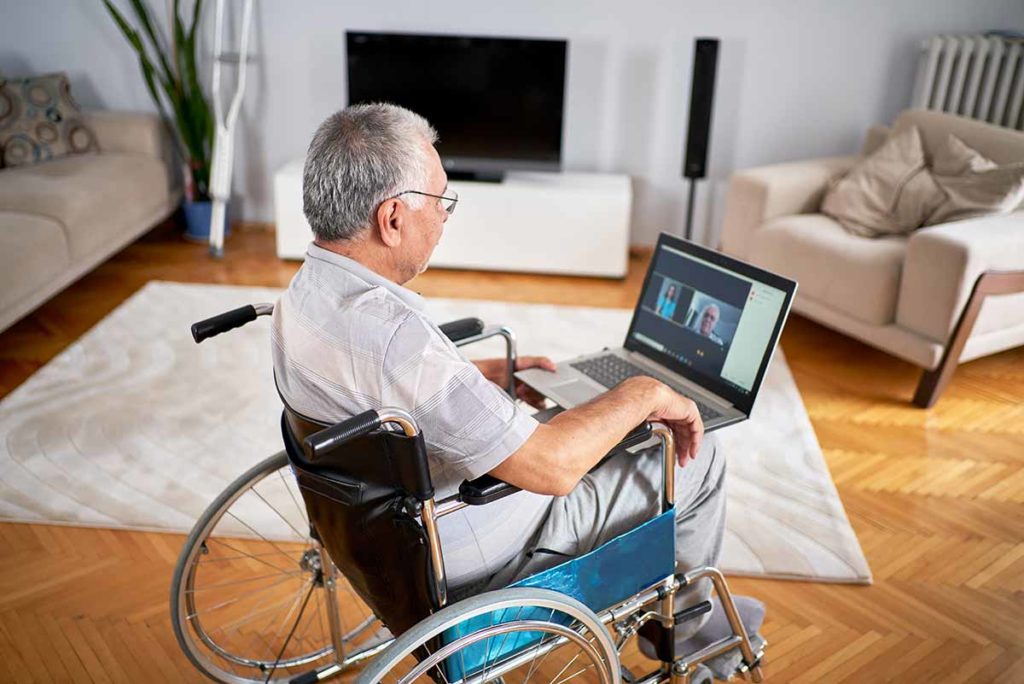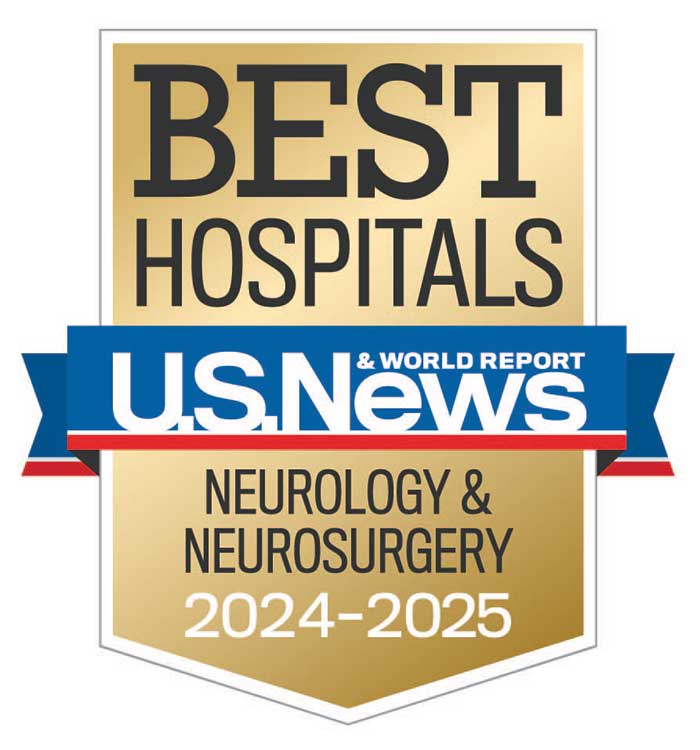Study assesses impact of ALS Clinic’s rapid move to telemedicine on patient care during COVID-19 pandemic
How did the rapid shift from in-person visits to telehealth impact the overall quality of patient care? It’s a question providers nationwide have asked ever since the COVID-19 pandemic forced the temporary suspension of in-person visits at most U.S. providers’ offices in late winter and early spring 2020.
To find an answer, researchers conducted a retrospective study of 127 patient encounters scheduled by the ALS Clinic at Penn State Health Milton S. Hershey Medical Center. The yet unpublished study assesses the feasibility, patient preferences and outcomes of the outpatient clinic’s shift from in-person visits to synchronous videoconferencing (telemedicine) or telephone visits during that time period.
“Most of the patients with ALS who we care for can’t afford to have their health care postponed for a long period of time. Many have rapidly progressive disease and have multiple health care needs,” said neurologist Dr. Zachary Simmons, Director of the ALS Clinical and Research Program at Milton S. Hershey Medical Center, and an investigator in the study.
“That’s why we decided to make a rapid conversion to an all-telehealth system. But the question was whether we could achieve that because not all of our patients are comfortable with telemedicine as a way of receiving their care.”
The study examined ALS patients scheduled to be seen in the ALS clinic from March 18 to June 3, 2020. The clinic contacted each of the 127 patients and either scheduled a telemedicine visit, scheduled a telephone-only visit or postponed the appointment based on patient preference. The researchers recorded patient age, time from disease onset, ALS Functional Rating Scale-Revised (ALSFRS-R), patient choice and outcomes.
The results showed that 69% of patients chose to proceed with a telemedicine visit, 21% chose a telephone-only visit and 10% chose to postpone their visit so they could be seen in-person once the clinic’s physical location reopened. Patients with a higher ALSFRS-R score (better overall physical function) were more likely to postpone their visit. Age and time from disease onset were not related to the visit type preference.
Of the 118 virtual encounters eventually conducted, 77% (91) began as telemedicine visits, and 27 (23%) began as telephone visits. While the clinic team conducted the majority of telemedicine visits successfully, they needed to convert 10 visits to a telephone-only visit.

Approximately 90% of patients in the study chose a telemedicine or telephone visit, while only 10% chose to postpone their visit until an in-person visit was available.
“Prior to the pandemic, we accommodated about 20% of patient visits through telemedicine,” Simmons said. “But the pandemic turned the telehealth model on its head in the sense that it went from a patient-driven choice to a provider-driven model.”
Making the shift to all virtual visits allowed the ALS clinic to maintain 88.6% of its patient volume compared to the prior year when clinic staff completed the majority of patient visits in-person.
“The key point we learned from this study is that, regardless of external circumstances that prevent our patients from coming to Hershey Medical Center and regardless of our patients’ physical limitations, we can continue to provide a very high level of subspecialty care via telehealth,” Simmons said.
“The second take-home point is that virtual encounters do not always go the way we intend. Sometimes technical factors prevented a telehealth connection. We learned flexibility, as did our patients. It wasn’t flawless, but we were able to get our patients the care they needed. It was an impressive effort by our nursing staff, schedulers, ALS Clinic colleagues and our information technology teams.”
Dr. James Grogan of the Department of Neurology at Penn State Health was lead investigator on the study. Other collaborators were Dr. Mansoureh Mamarabadi and Anne Haulman, also of the Department of Neurology; Susan Wash, ALS Clinic Nurse Director, with the ALS Association Greater Philadelphia Chapter; Habib Yazgi, Penn State College of Medicine, and Andrew Geronimo, PhD, Department of Neurosurgery, Penn State Health.
The study’s results build upon prior research showing that synchronous telehealth — when used for care of ALS patients by individual health care providers or a multidisciplinary team — is feasible, acceptable, cost-effective and may produce outcomes comparable to those of in-person care.¹
Simmons estimates that between 25% to 30% of ALS Clinic patients continued to choose telehealth encounters as pandemic restrictions eased in late 2020 and early 2021. The clinic’s multidisciplinary team provides care for ALS patients in collaboration with patients’ primary care physicians. The clinic’s team also conducts numerous clinical trials and research.
“We’ve found that telehealth and its associated tools, such as remote monitoring, pulmonary function testing and questionnaires, allow more patients to participate in research studies and reduce the number of in-person visits required of those patients,” Simmons said.

Zachary Simmons, MD
Professor and vice chair for research, Department of Neurology
Professor, Department of Humanities, Penn State College of Medicine
Neurologist and neuromuscular medicine specialist, Penn State Health Neuroscience Institute
Phone: 717-531-3828
Email: zsimmons@pennstatehealth.psu.edu
Fellowship: Neuromuscular Diseases, University of Michigan Hospitals and Health Centers, Mich.
Residency: Neurology, University of Iowa Hospitals and Clinics, Iowa City, Iowa
Medical School: University of Florida, College of Medicine, Gainesville, Fla.
Internship: Internal Medicine, University of Iowa Hospitals and Clinics, Iowa City, Iowa
Connect with Zachary Simmons, MD, on Doximity
Reference
- Haulman A, Geronimo A, Chahwala A, Simmons Z. The Use of Telehealth to Enhance Care in ALS and other Neuromuscular Disorders. Muscle Nerve. 2020;61(6):682-691. doi:10.1002/mus.26838

